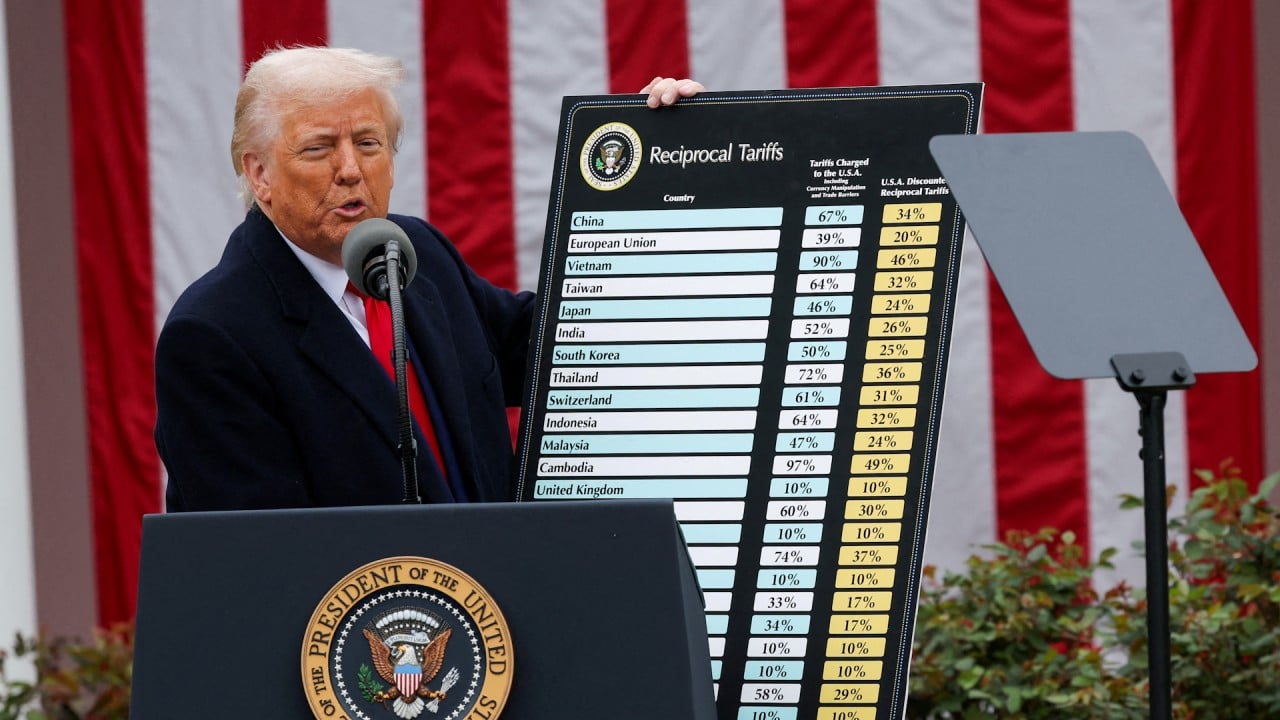Since US President Donald Trump’s return to the White House in January, he has raised tariffs on Chinese imports numerous times, picking up where his previous administration left off with another bilateral trade war.
That conflict has gone global with Trump’s much-anticipated “Liberation Day”: the roll-out of “reciprocal tariffs” against nearly all US trade partners, including a 34 per cent increase of import duties on Chinese goods.
Here, we attempt to summarise what these new tariffs include, the effect they could have on China’s economy and compare them with the rates from an earlier, more cordial era.
What is the new effective tariff rate?
According to a Citi research note published on Thursday, the US’ effective tariff rate on Chinese goods has increased to around 65 per cent after Trump’s unveiling of new reciprocal tariffs and the end of the duty exemption on low-value imports.
This rate was derived by adding the new 34 per cent rate to the 20 per cent in additional tariffs imposed since Trump’s inauguration in January, as well as earlier tariffs applied under Section 301 of the US trade law with an effective rate of around 11 per cent.
The “de minimis” exemption – a reprieve from import duties for packages with a value of US$800 or less – is also scheduled to be phased out on May 2.
Analysts at Capital Economics said the “average US tariff rate on China is now almost 70 per cent”.

03:19
Trump slaps 34% reciprocal tariffs on Chinese imports as part of ‘Liberation Day’ package
Trump slaps 34% reciprocal tariffs on Chinese imports as part of ‘Liberation Day’ package

 By South China Morning Post | Created at 2025-04-03 04:56:36 | Updated at 2025-04-04 01:22:30
20 hours ago
By South China Morning Post | Created at 2025-04-03 04:56:36 | Updated at 2025-04-04 01:22:30
20 hours ago








